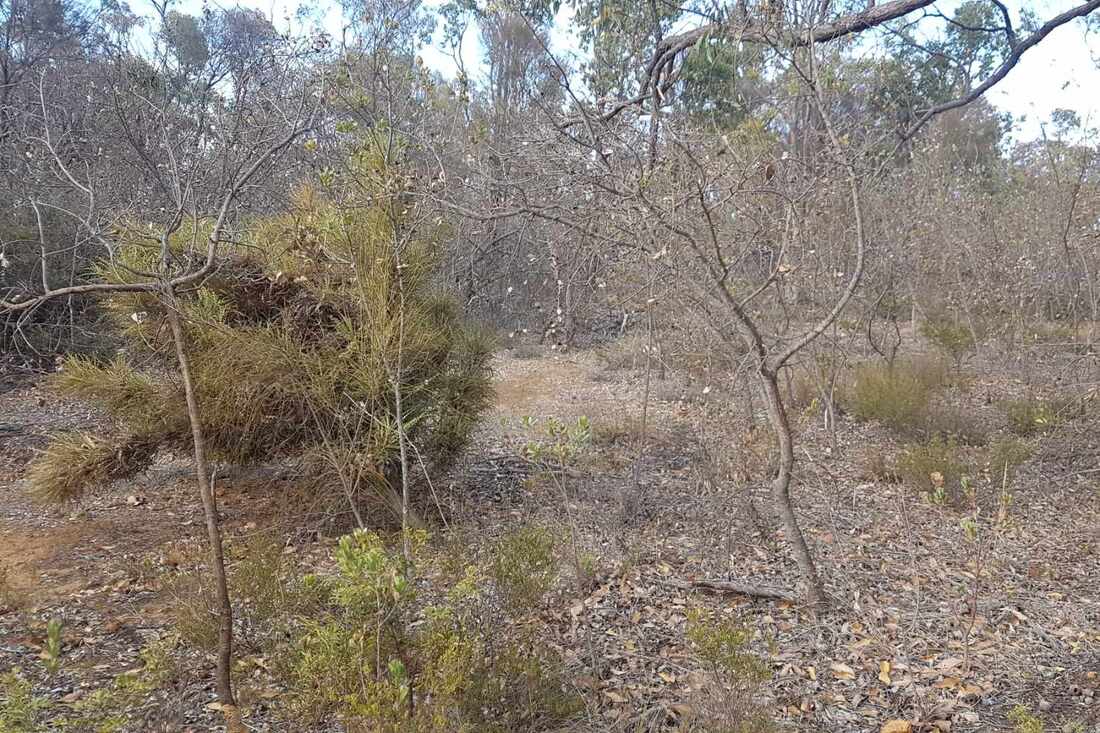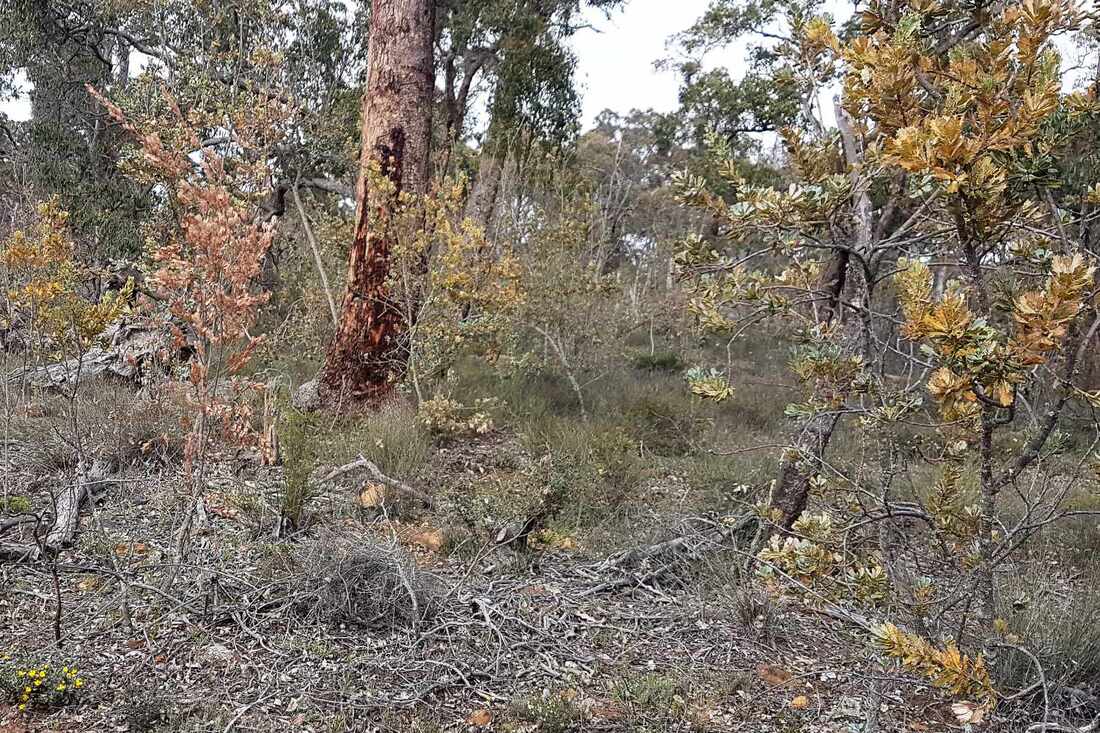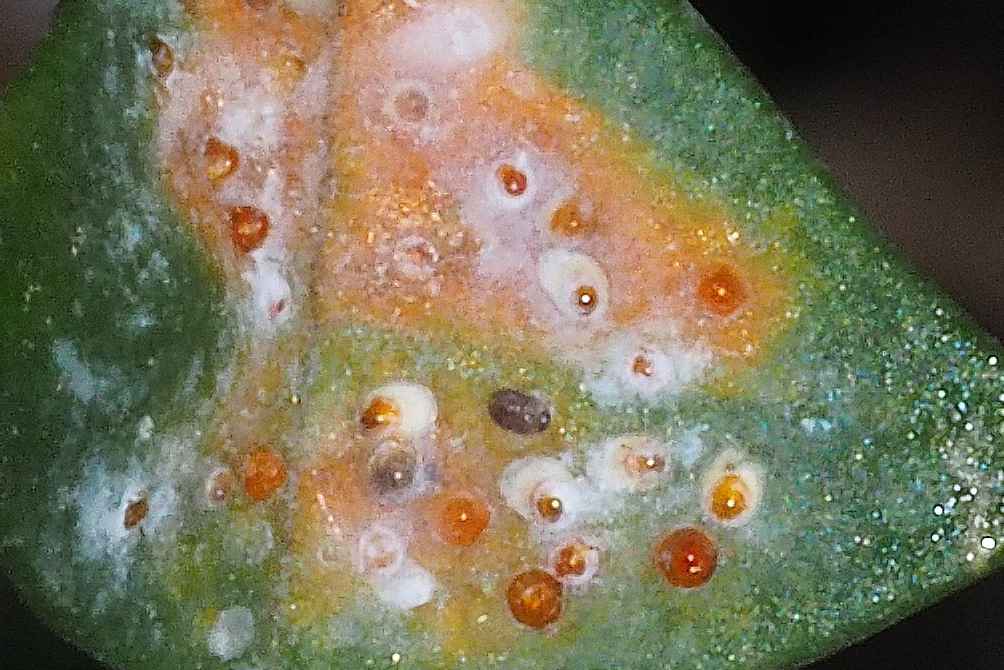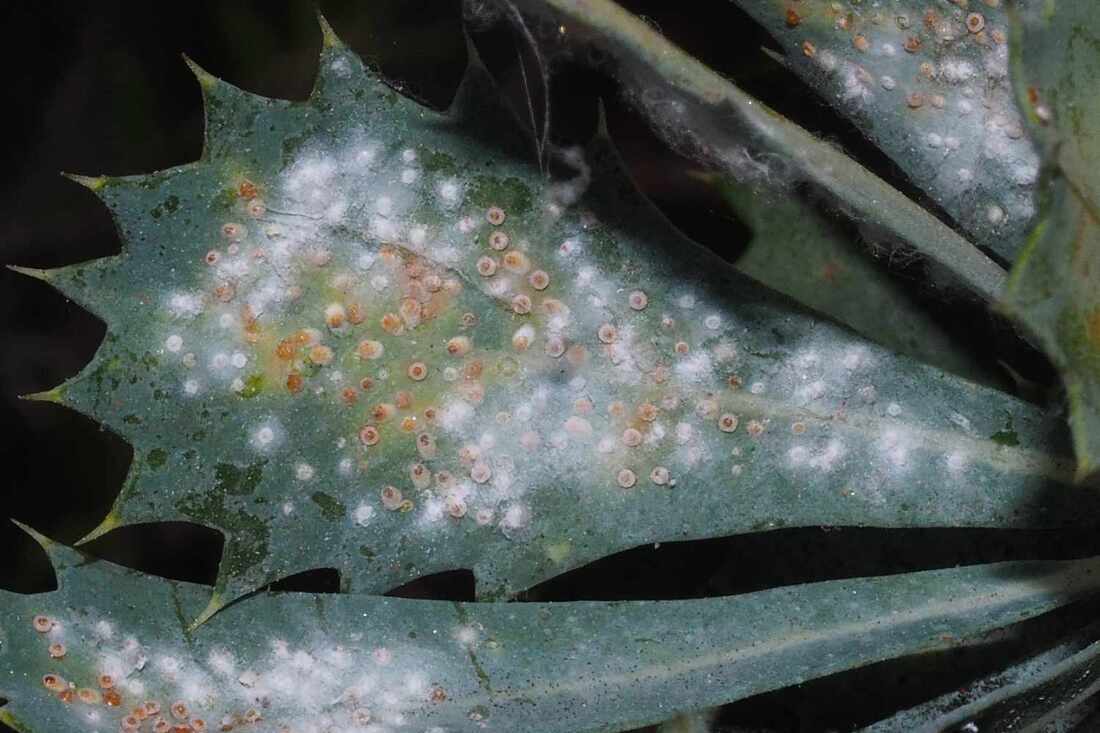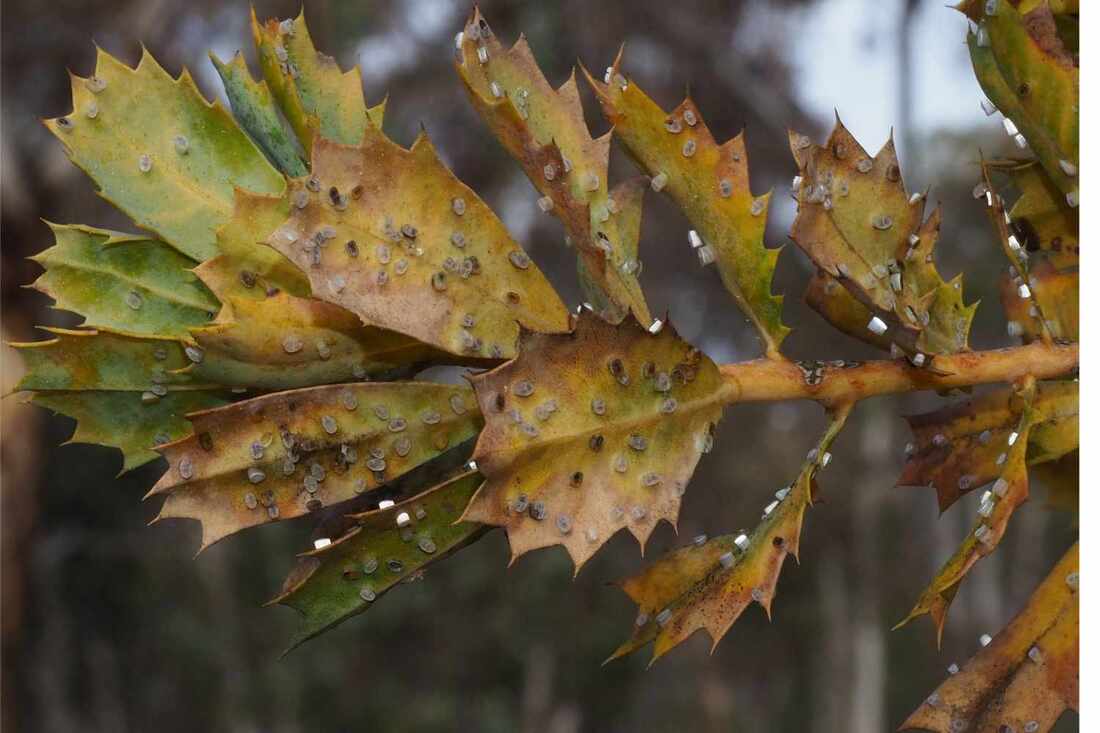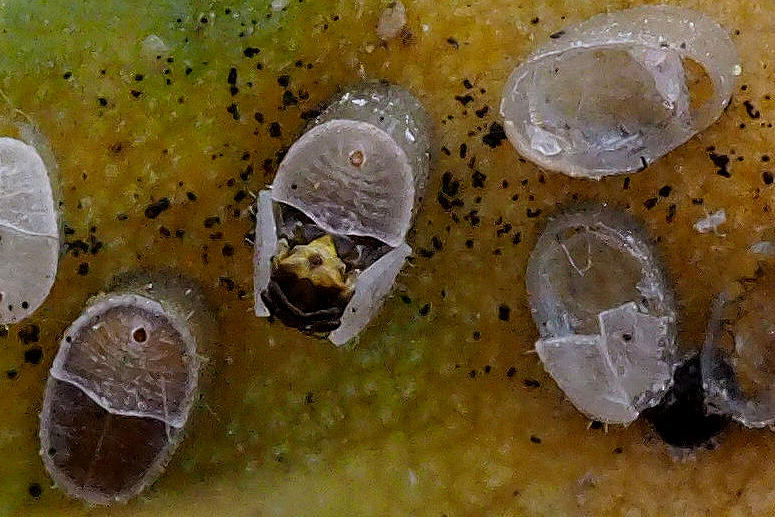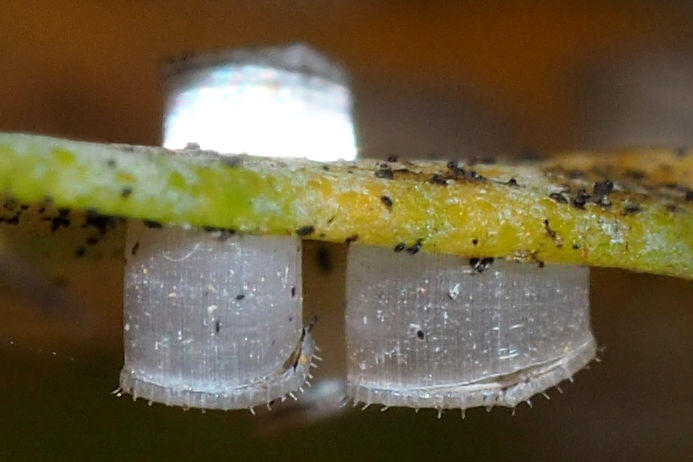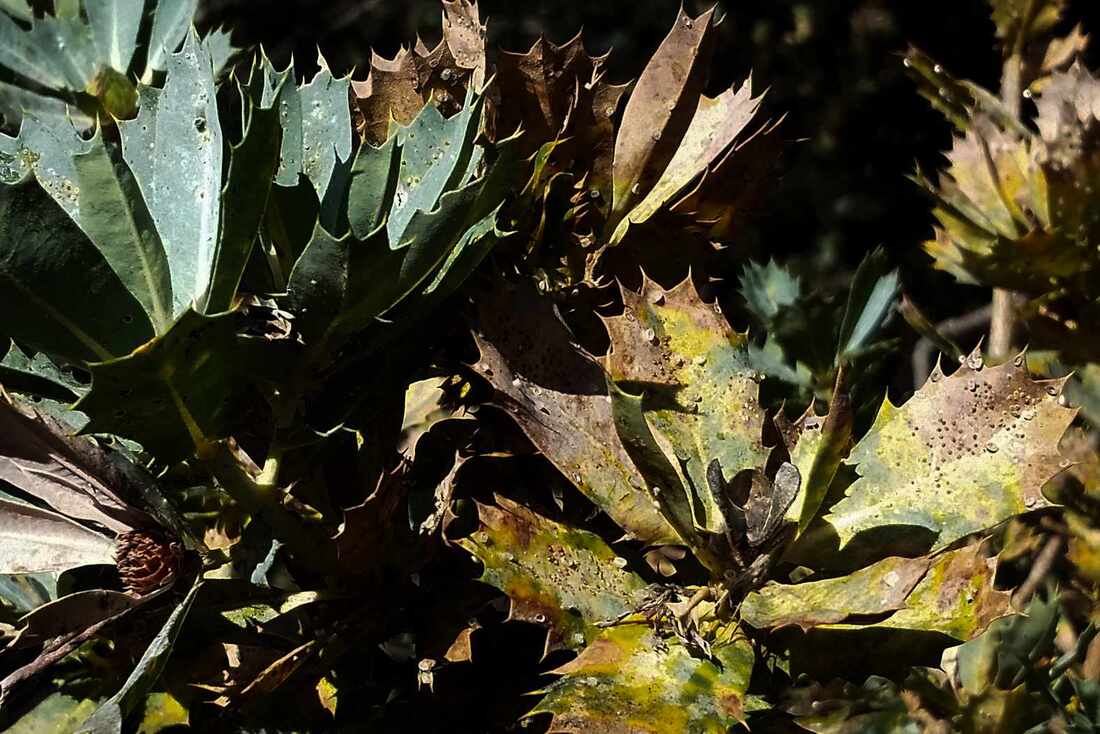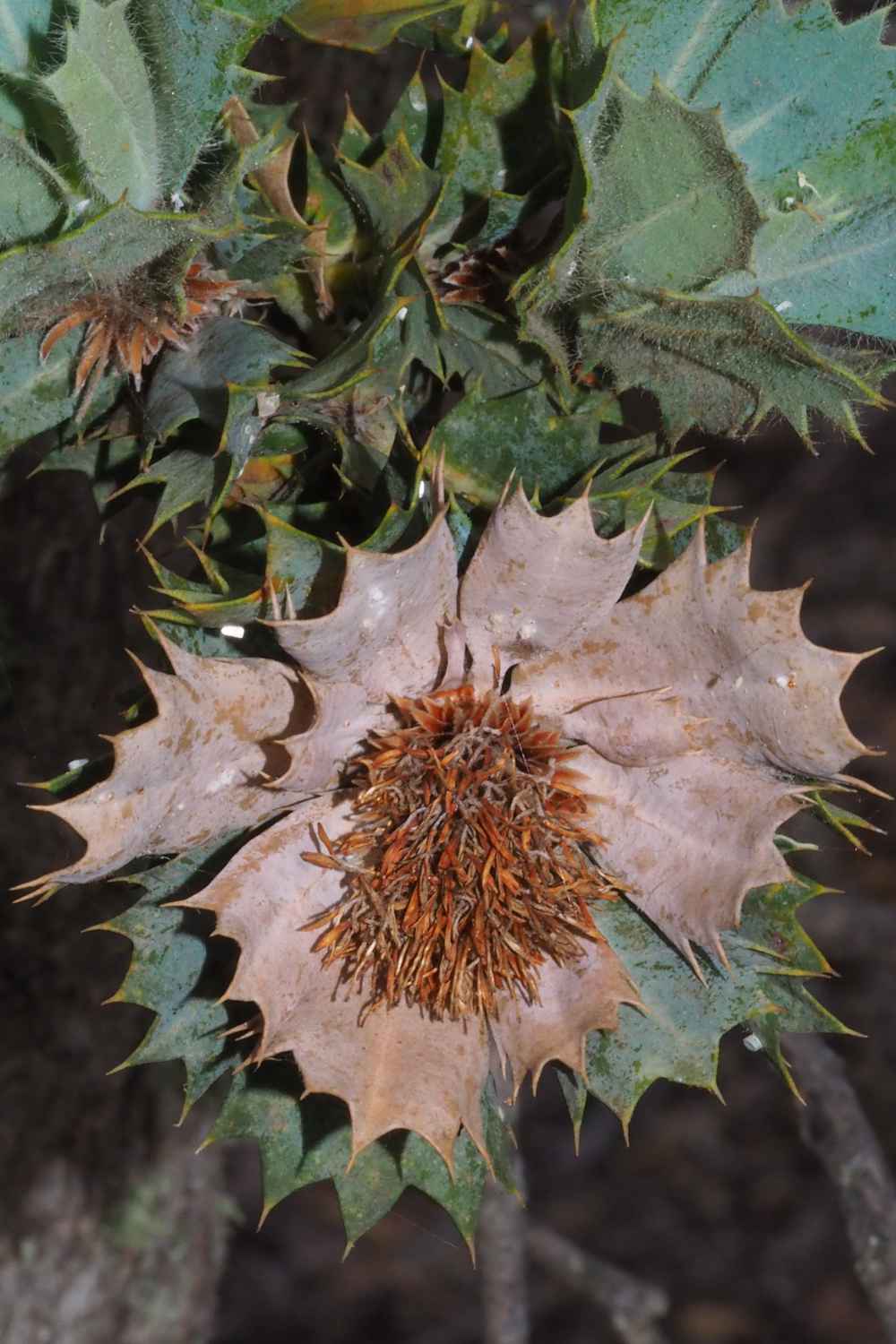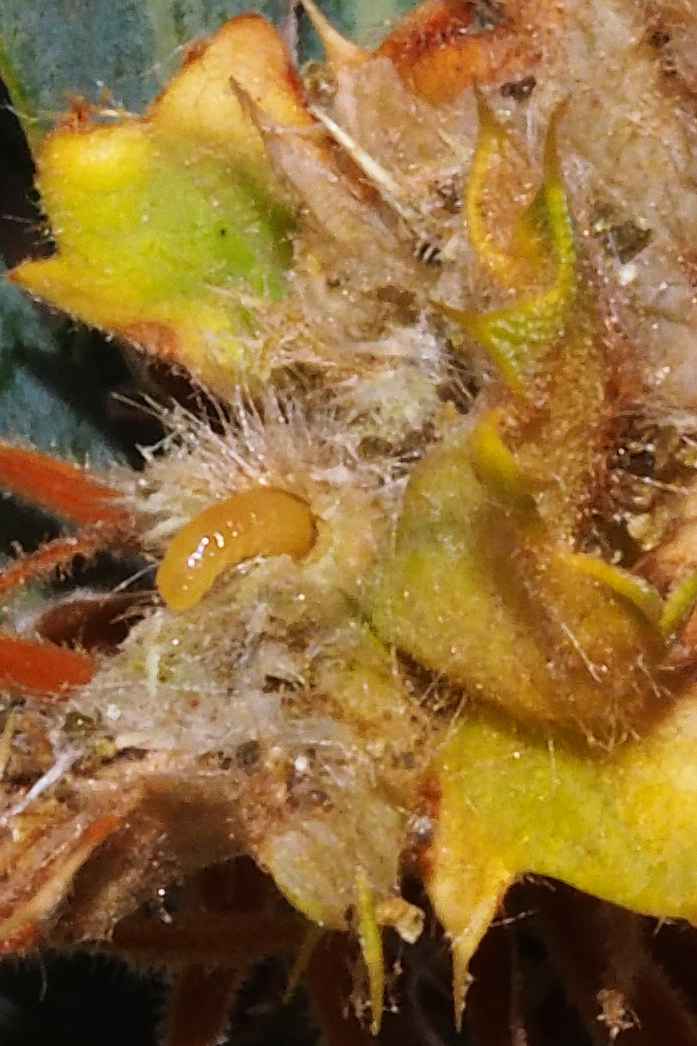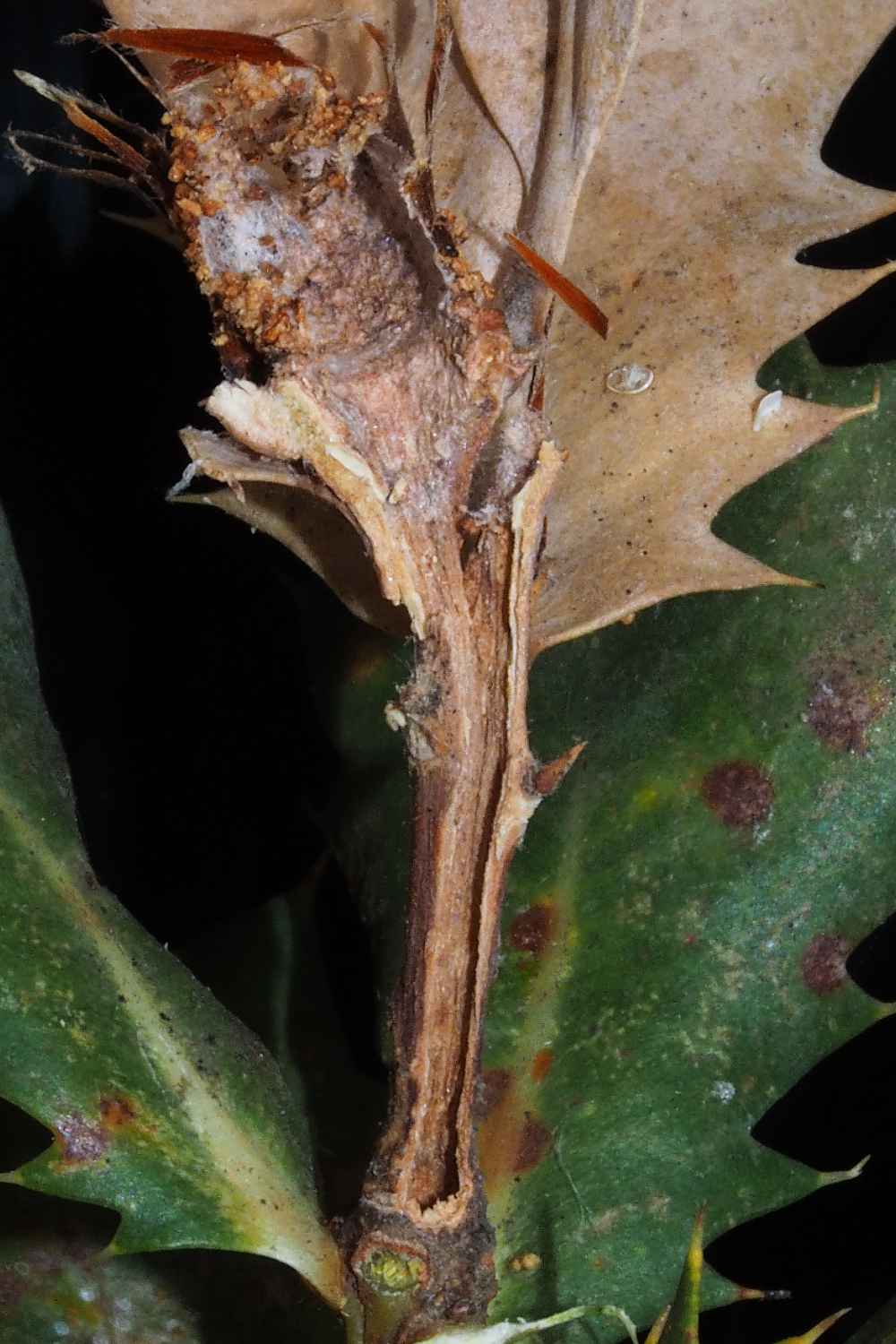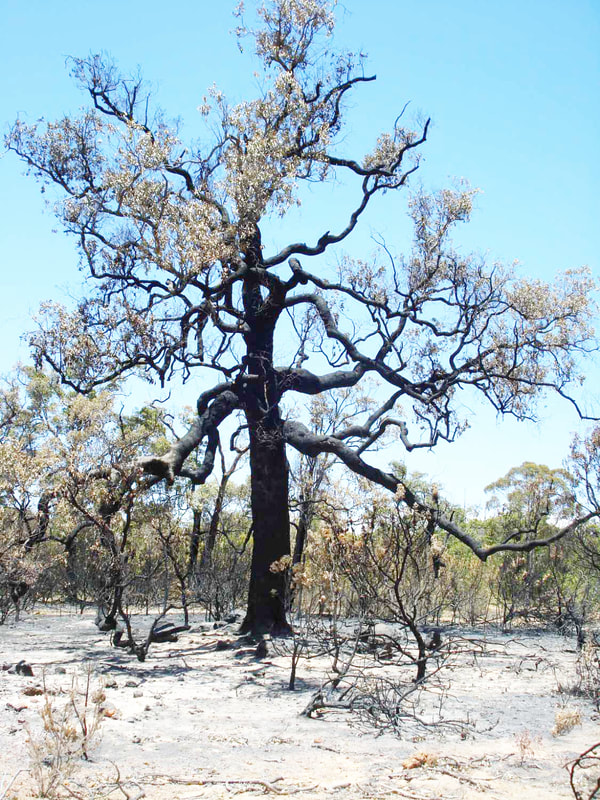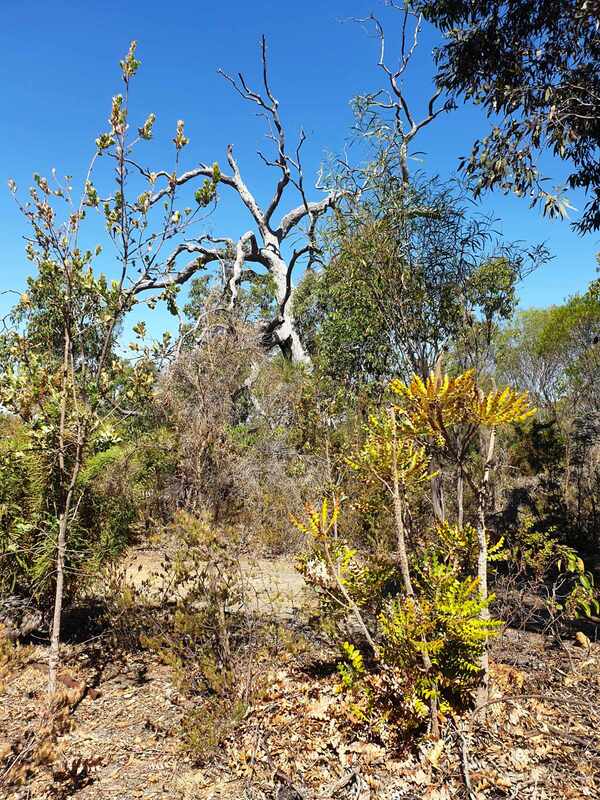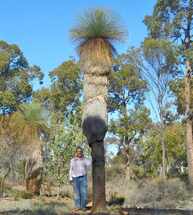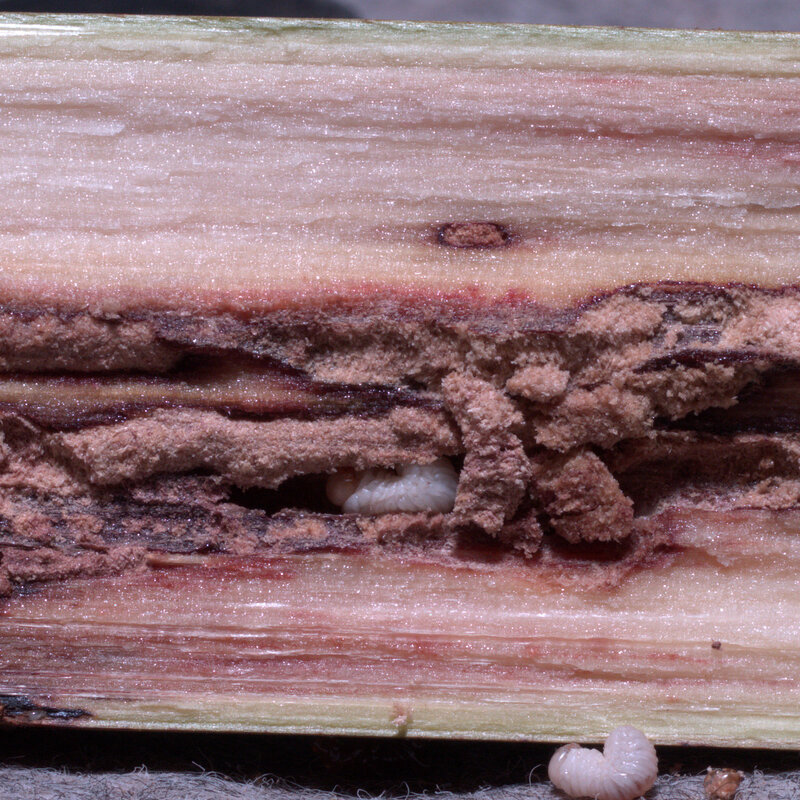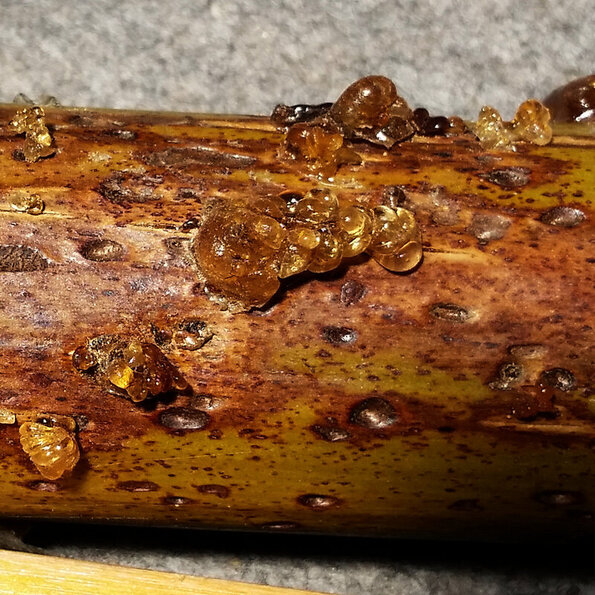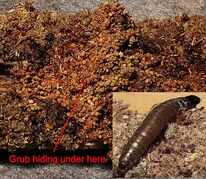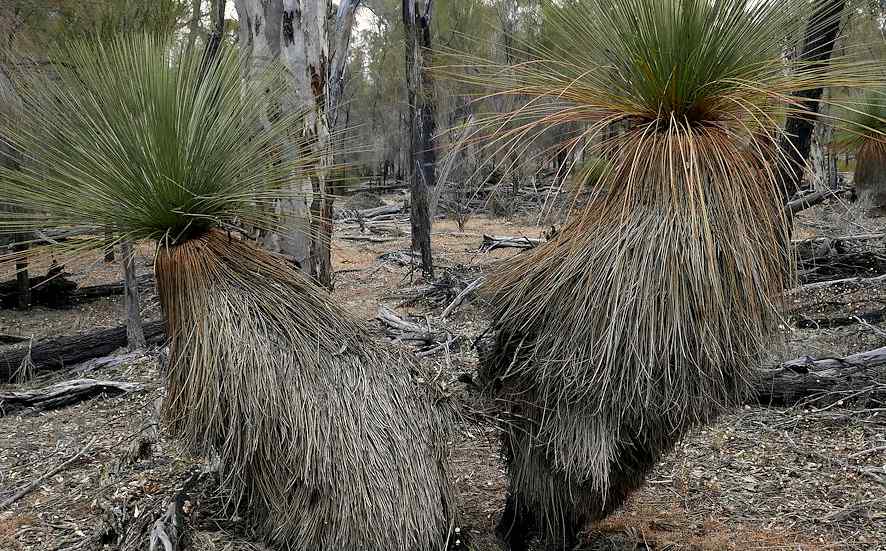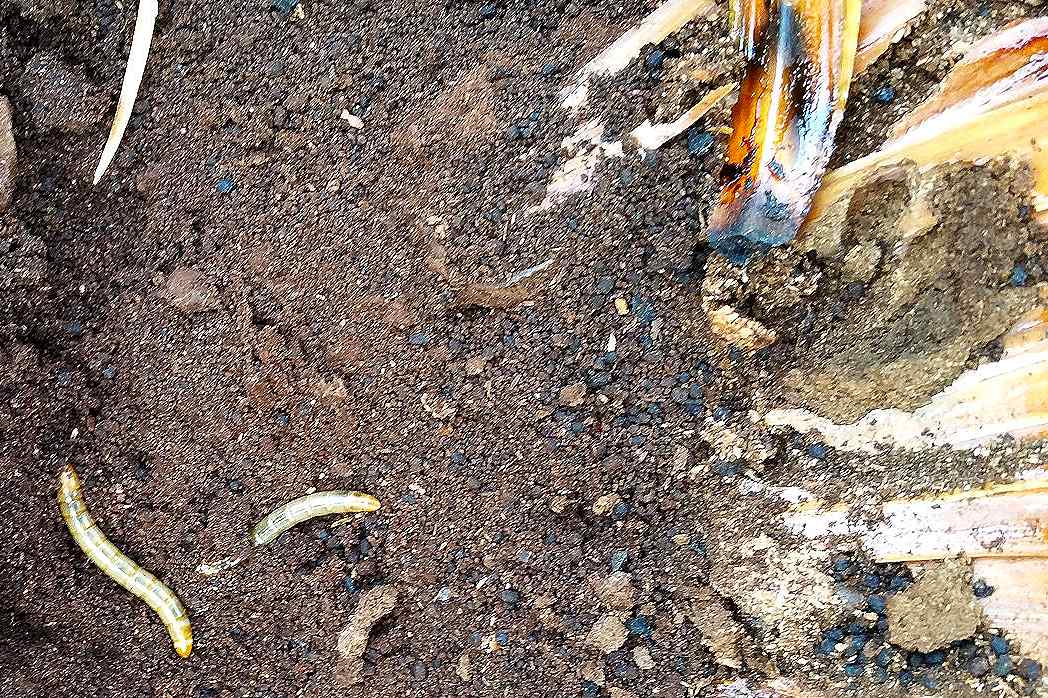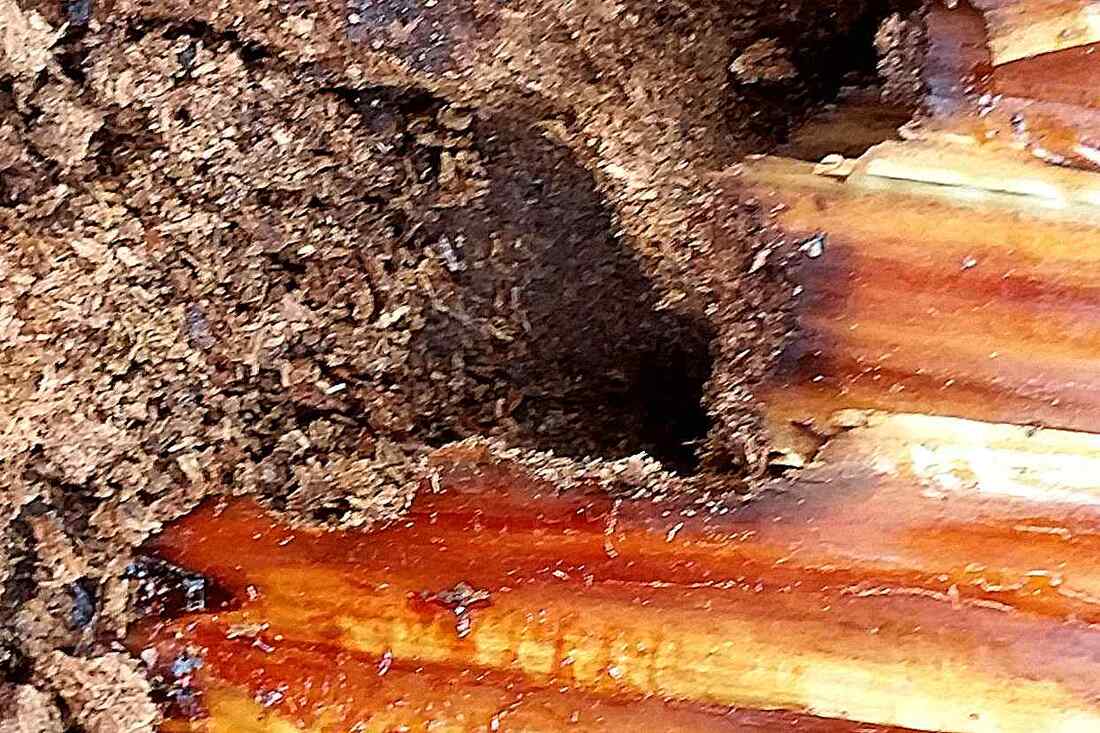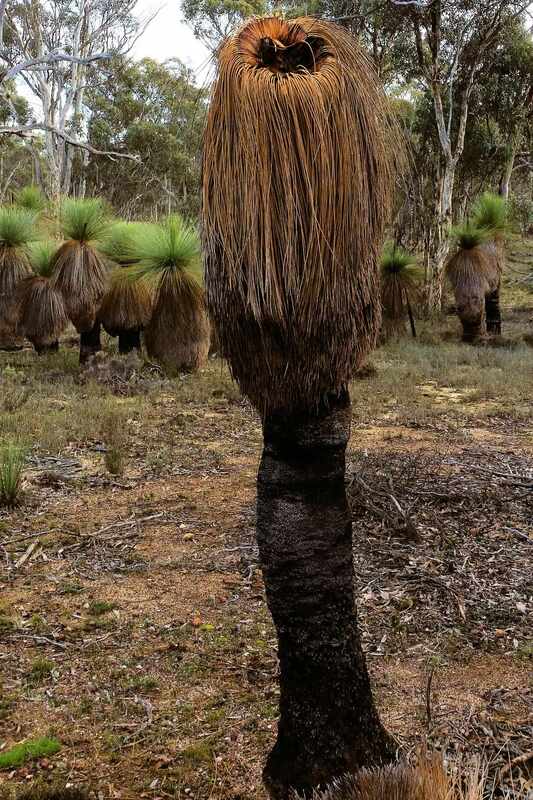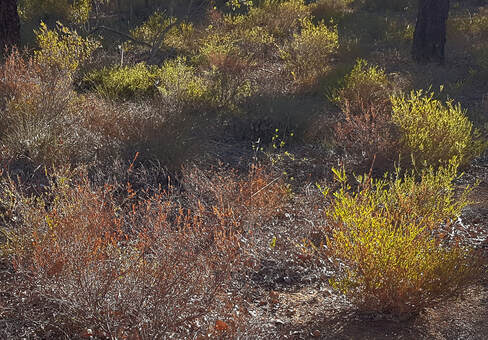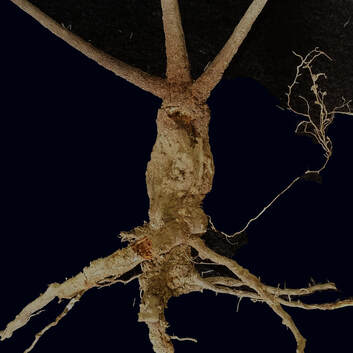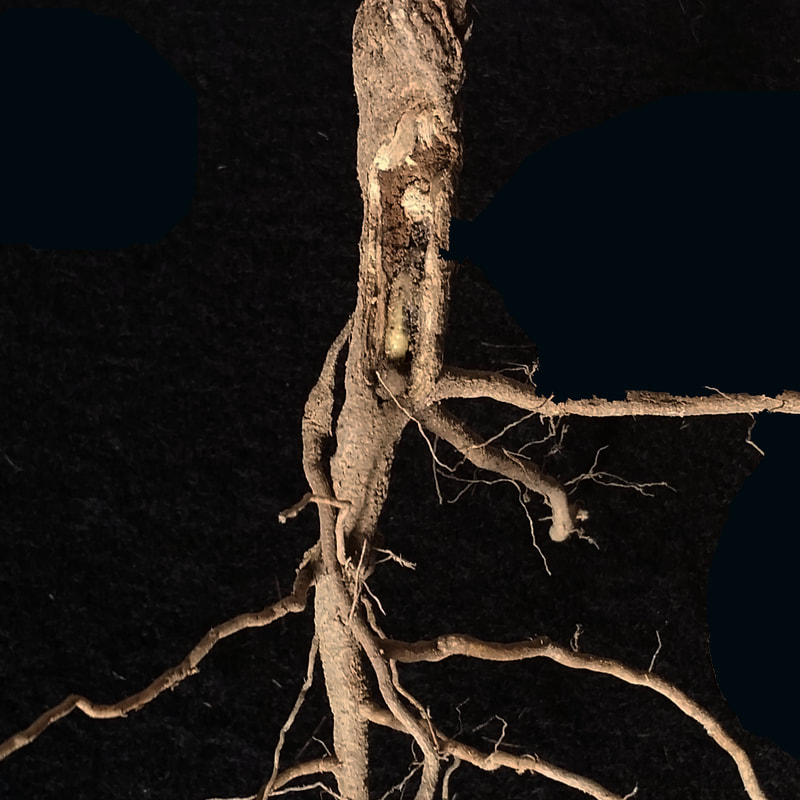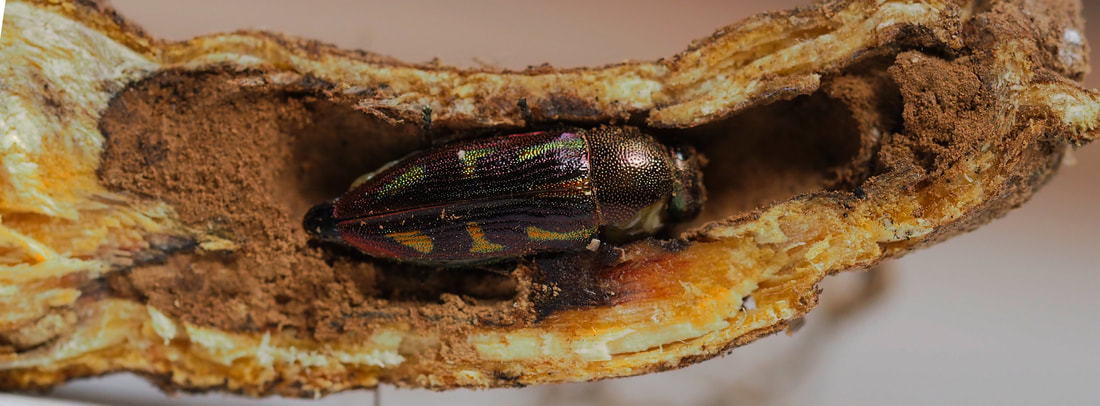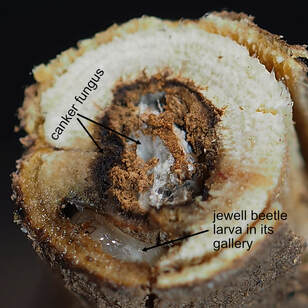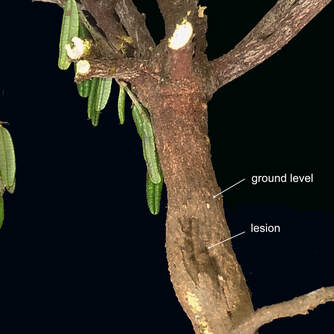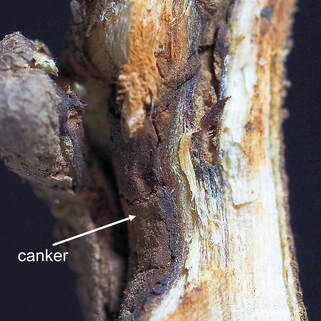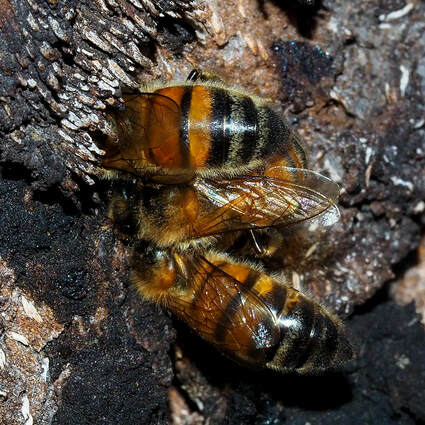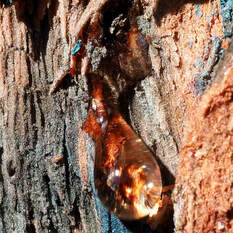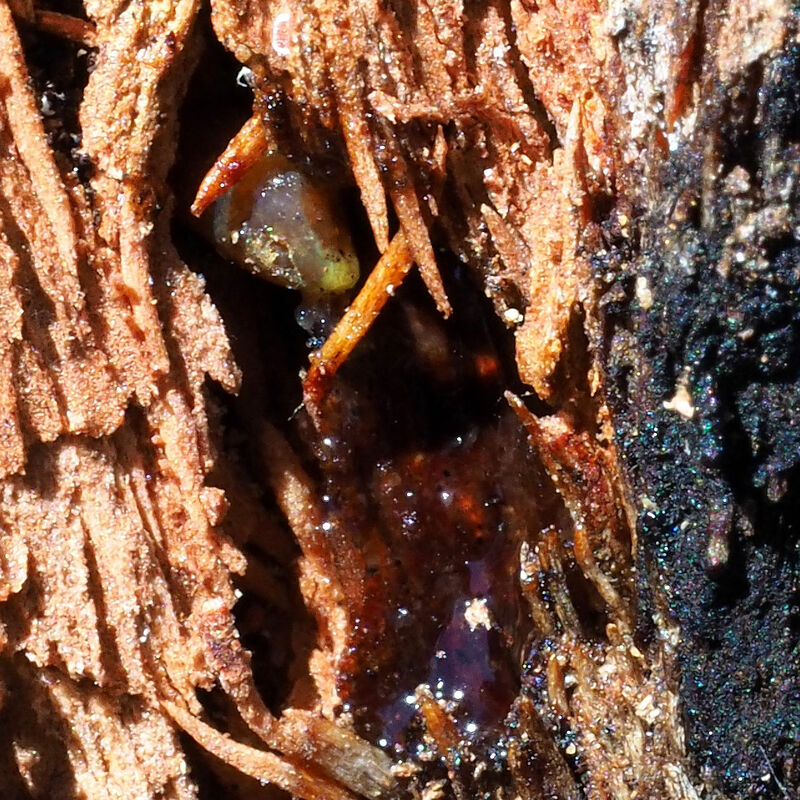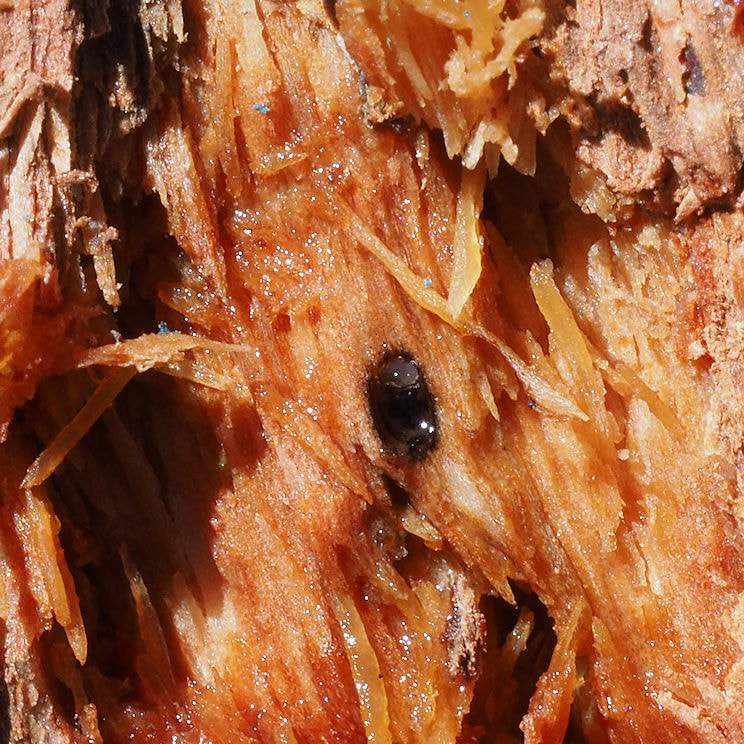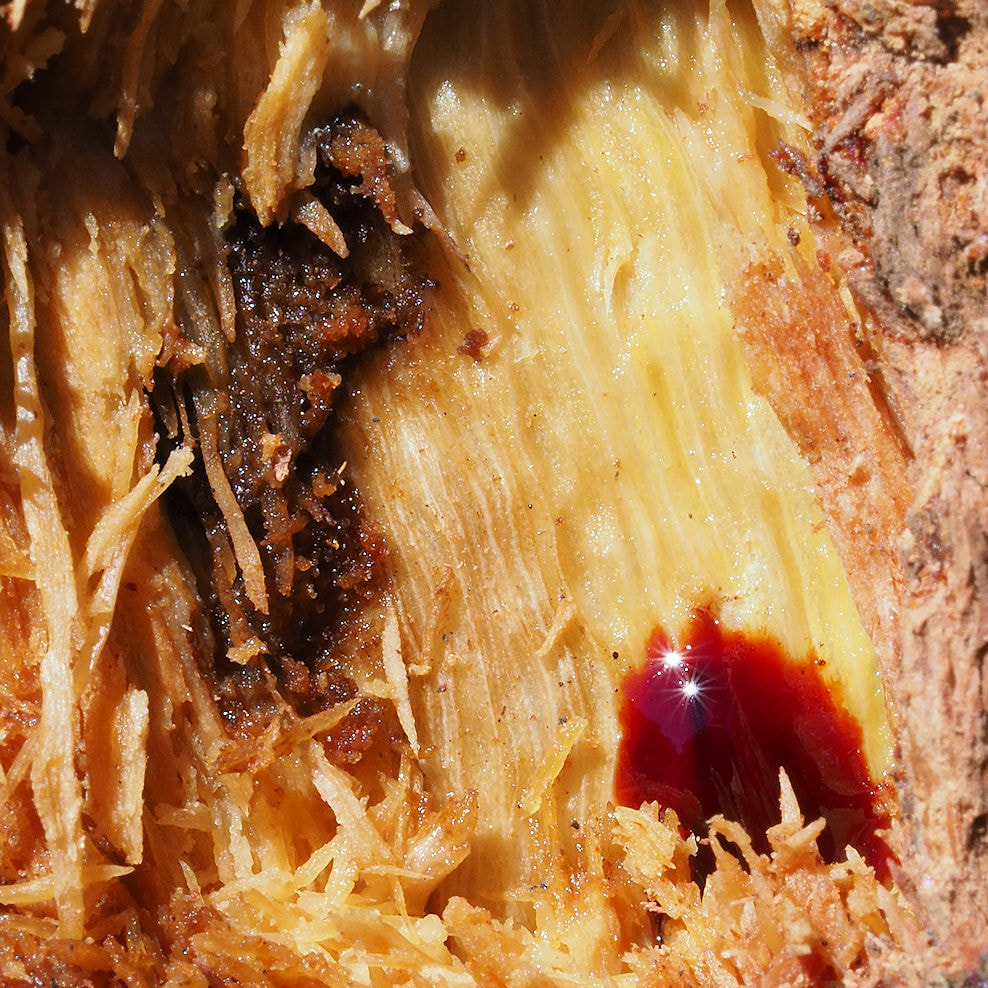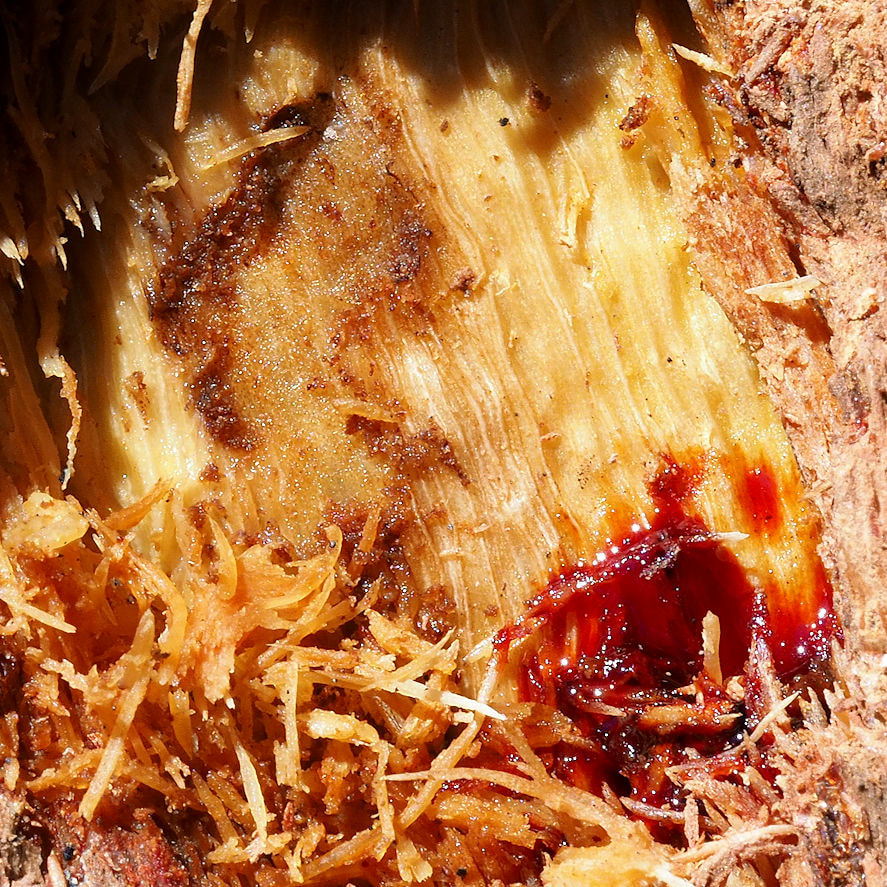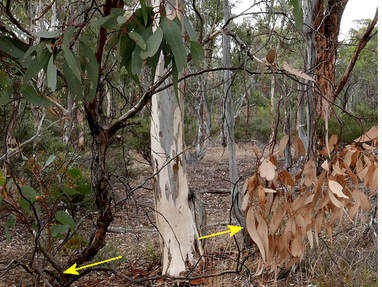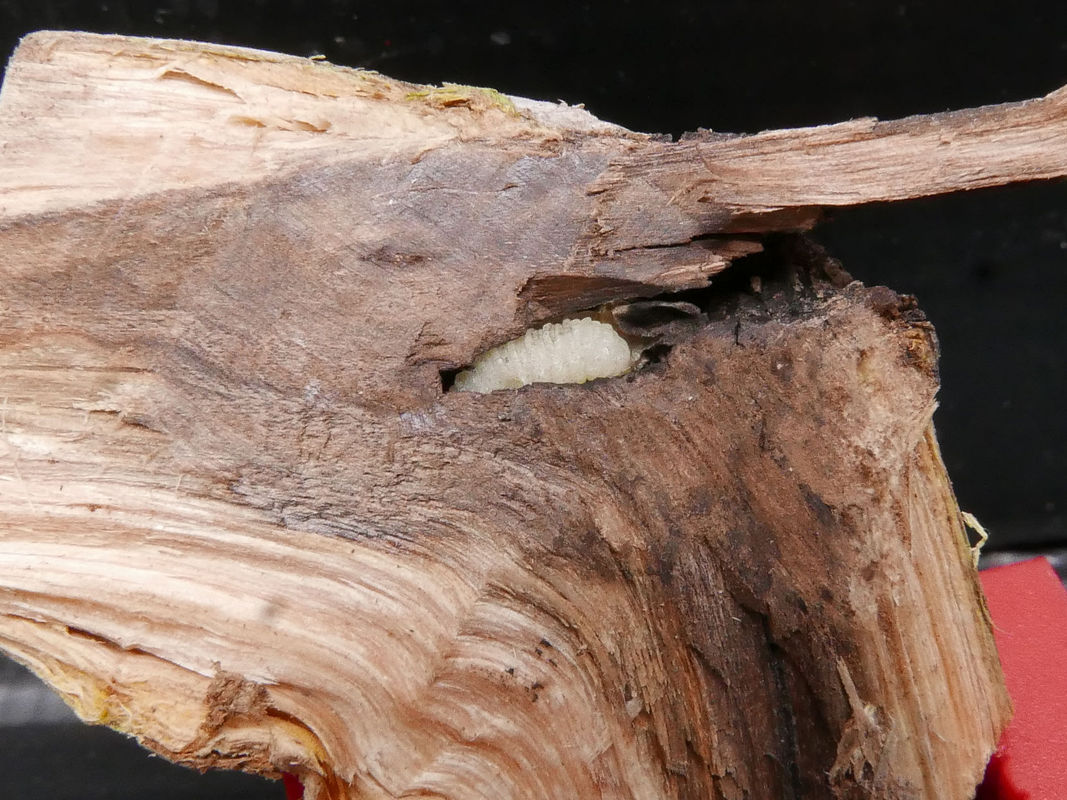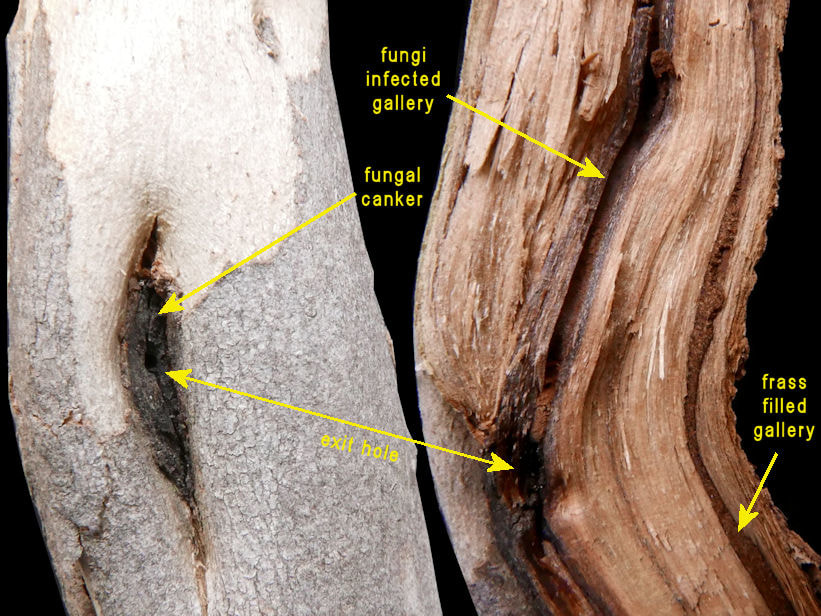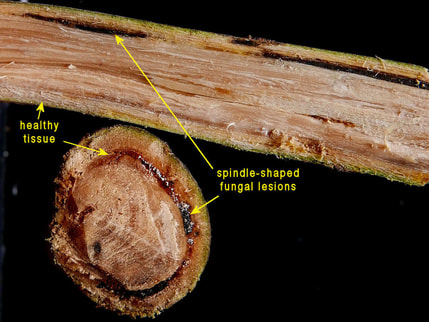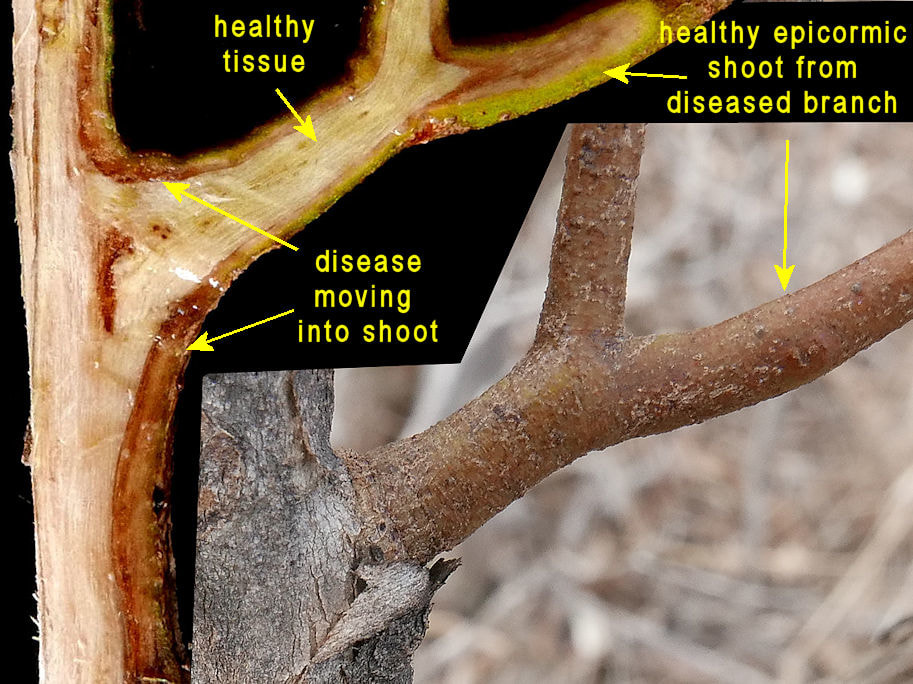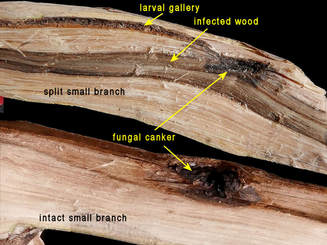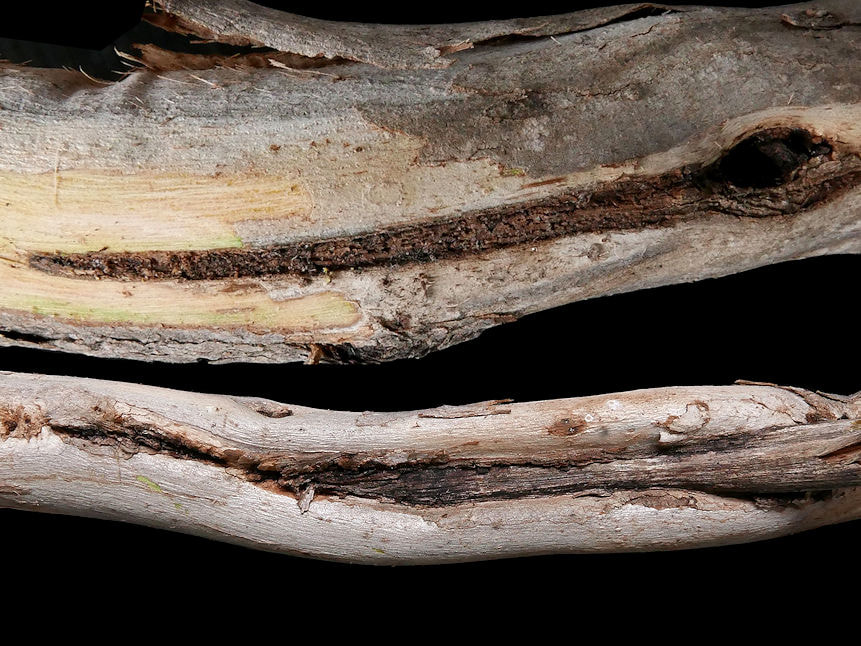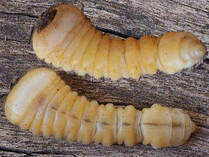About three years ago during a very dry spring I noticed that parrotbush (Banksia sessilis) plants on Banksia Walk shallow ironstone soil east of the water tank were severely infested with a scale insect. The damage has progressed each year to the extent that most plants there are dead or unthrifty. Accompanying golden dryandra (Banksia nobilis) plants are much less affected
Adult whiteflies look like tiny white powdery moths, but I am yet to see any. The mains signs are small powdery spots (early larvae), yellowish to brown scale-like mid-stage larvae and pupal cases that look like miniscule white crystal coffins. Whitefly are supposed to only be on the leaf underside, but this species is often on the upper side. Infested leaves often have a powdery or waxy looking coating and black spots that may be associated with honeydew exuded by the larva. The spots look like insect poo to me!
The Banksia walk was named after a small group of Bull Banksia (Banksia grandis) plants that occur on this soil. They have been struggling in recent years, and some are dying this summer. Interestingly they are not greatly infested with whiteflies or borers. This area is a photo-reference site that I have been monitoring. Images changes since the 2009 fire.
